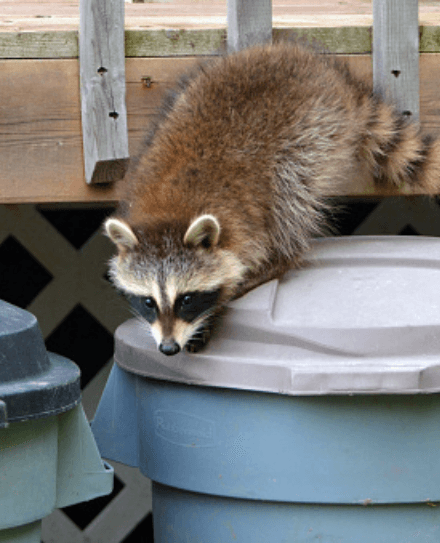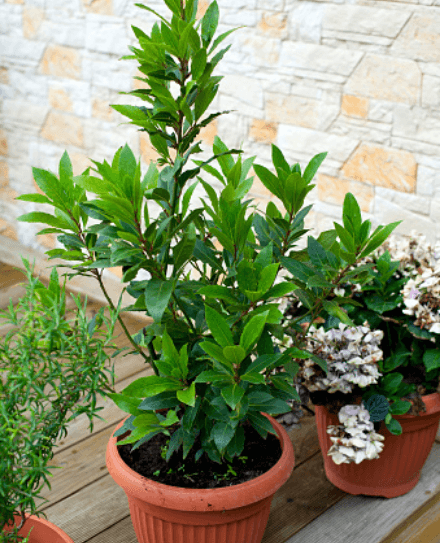A Pest Infestation Can Be a Stressful Disaster for Property Owners to Deal with and Can Result in an Increase in Health Risks and Potential Property or Structural damage
When attempting to control pest populations, it’s best to carefully consider the effects of the pest control methods that are used to solve the problem. Traditional pest control products and services commonly used by pest control businesses could be damaging to animals or nature. For many homeowners, it is important to utilize pest control methods that fix the pest problem without causing negative consequences to surrounding areas.
That concern is precisely what Integrated Pest Management fights against. Integrated Pest Management, or IPM for short, focuses on developing ethical and effective pest management strategies that reduce the use of pesticides and prioritize natural solutions. Keep reading to learn all about the different methods of control IPM uses — and how you can use those techniques on your own home or garden!
What is IPM
Integrated pest management is a method of pest control that uses a variety of natural methods to solve pest infestations. In many cases, IPM is most effective when used as a preventative measure to fight off pest infestations before the problem begins. IPM methods include both biological control and chemical control, among other pest-fighting techniques.
IPM in particular stresses control not destruction. Nature maintains a delicate balance and too much interference into the cycle of nature can do more harm than good. For example, while pesticides can remove large populations of pests, they can also cause unintended negative consequences to other animal populations. IPM methods of control limits pesticide usage and instead emphasizes:
- Using physical, biological, and cultural methods to manage multiple pest populations
- Balance between natural populations of both pests and pest fighters(Good bugs!)
- An economic model of pesticide usage that manages populations rather than completely eradicates them
All in order to reduce harmful pesticides, protect the health of both nature and humans alike, and cost-effectively control pest populations.
It’s understandable to want to eradicate pest controls as quickly as possible —bugs in your home can be unsettling and cause damage to the comfortable spaces where you relax and unwind; however, simply combating pests with all-over pesticide treatment is not the right choice, as it can damage your home, health, and the environment.
Therefore, for many homeowners and businesses, IPM is the best form of pest control to use. Read on to learn more about simple ways to start implementing IPM pest control techniques into your own fight against invasive pest populations.
IPM In Action
Integrated pest management can be used in a variety of different ways. IPM doesn’t look the same every time it’s used —instead, each unique situation calls for a unique combination of strategies. Use a variety of different IPM methods in order to best protect your home from pests.
In fact, pest control is most effective —and safest— when a number of different methods are combined. Some examples include the biological control and chemical control methods, but also include physical and cultural forms of pest control as well. That means that if your home or garden is suffering from a pest control issue, the solution won’t always be exactly the same.

First Stage: Cultural IPM
Cultural IPM practices involve making changes in your lifestyle that can help limit the growth of pest populations. These steps are —for the most part— easy to add into your everyday life and can provide effective results.
One form of cultural pest control is to close your trash cans. All different types of pests are attracted to garbage as a source of food. By taking away the food source, the pests will not be attracted. Another simple solution is to not leave pet food out. Similar to garbage, pet food is highly appealing to pests.
Another effective method of cultural control is to limit the length of time that garbage is left on the curb for pick up. All trash should be properly disposed of and left outside only for a minimal amount of time. This discourages pests from approaching your home.
By actively practicing cleanliness and preventative cultural habits, homeowners can help protect their home from an unwanted pest infestation —all without the damaging effects of traditional pesticides and non-IPM practices.
Second Stage: Physical OR Mechanical IPM
Physical alterations in your property’s landscape can be an excellent preventative measure to take against pests. After all, pest control is most effective before an infestation begins. It’s a lot easier to keep animals away than it is to get rid of them once they’ve invaded your home.
With a little bit of careful planning, homeowners can transform their property into a place that pushes pests away, rather than attracts them. Plant placement is a popular physical IPM technique that provides genuine results. By thinning out plants and keeping plants 3 feet away from the building, you can take away cover for pests and access points into your home. Skirting up your plants by removing the lower branches and foliage can also help prevent pests from entering the comfort of your interior spaces.
Be sure to take a careful look around your home and be vigilant when sealing holes. Holes provide an easy entry-point for pests —therefore, by blocking the hole, you can help ensure no pests can enter.
In terms of mechanical control methods of IPM, both snap traps and live traps are effective and less harmful forms of pest control, especially compared to pesticide usage. Snap traps, commonly used for rodents, when used properly are safe for humans and most other animals, inexpensive, and reusable. They target the invasive population without disrupting the rest of the surrounding environment.
Live traps are another safe and humane method of solving a pest infestation. Live traps can contain large pests, such as rats, as well as larger pests such as racoons or skunks.The animal can be safely removed from your property, keeping your home clean and pest free. However, while the live trap can be effective, it can occasionally trap other animals inside —so must be checked daily.
Smell can be an enticing thing for pests —and can also be an unfortunate side effect of a pest infestation. By cleaning household objects for odors, homeowners can rid their home of lingering smells while sanitizing at the same time. Many, if not most, pest populations can be safely controlled without the use of pesticides when sanitation is used.
Overall, by putting in some effort to safeguarding your home, it can be easy —and less damaging to both your property and the environment— to prevent pest infestations from occurring by using IPM techniques.

Third Stage: Biological IPM
In certain cases of invasive pest infestations, nature can fight back. In fact, the type of plants that grow around your property can play a big part in attracting —and repelling— pest populations. In some cases, plants such as basil or bay leaf can naturally repel pests. In other cases, planting foliage that attracts natural predators can decrease the pest population.
Using other animal populations to fight against pests is also a well-known form of biological control. As mentioned above, naturally attracting predators can cut down on pest activity, specifically pests that are affecting gardens or crops. Intentionally introducing natural enemies or importing new creatures can be helpful in cutting pest populations, but can occasionally be hard to control. A common example of a natural predator is the lady bug, they consume aphids which can destroy gardens. Another popular biological method is raptor poles or owl boxes to promote the predator population to take up residence to help control the rodent pest population.
Biological control is effective, but all homeowners should complete research on what works best for their invasive pest populations!
Lastly: Chemical IPM — What To Use and What To Avoid
When people think of typical pest infestation solutions, pesticides and chemicals are the techniques that people commonly imagine. While chemical solutions are not always the best choice to use when dealing with pests, they can be very effective when combined with other methods of pest control —and most importantly, safe when applied properly by a professional.
The important thing to consider when using chemical control in IPM is safety. That includes safety for the environment, animal populations, and of course, you and your family. Chemical and pesticide usage is an acceptable form of pest management, but only when properly done.
Rat bait stations are one example of a safe pest control method that actively uses chemicals. The rat poison specifically targets rat populations and the station itself is designed to be tamper-free, keeping out young children and beloved family pets.
In addition, spot treatments help tackle specific areas of increased pest activity. Applying pesticides to only highly affected areas can cut down on the worst of the pests without overly damaging the surroundings.
In comparison, a general broadcast application is a chemical control technique that uses pesticides on the entire area of infestation. While in some cases this might be a necessary IPM technique, it is often better to use a combination of other methods.

Are IPM Techniques Right For Me?
The simple answer is yes —all homeowners, farms, or businesses can more effectively fix their pest control issues by using IPM techniques. Not only are IPM pest control methods more humane, but they are also generally safe for the environment while still capable of producing effective results for homeowners. IPM methods can remove the threat of pests while still maintaining balance in the natural ecosystem. Additionally, many of the preventative IPM measures help stop the pest problem before it even begins.
Conclusion
Integrated pest management is a pest control practice with a long history and proven results. In order to effectively maintain your property, it is best to use IPM practices rather than overload on harmful pesticides and cause additional damage to the land. By utilizing a combination of different IPM methods, such as biological or chemical control, or simply by taking a more active role in eliminating things that might attract pests to your property, homeowners can safely and securely protect their home from pests. Overall, IPM is the preferred method of pest-control because it produces results, is highly ethical, and safely balances populations in a natural environment.
